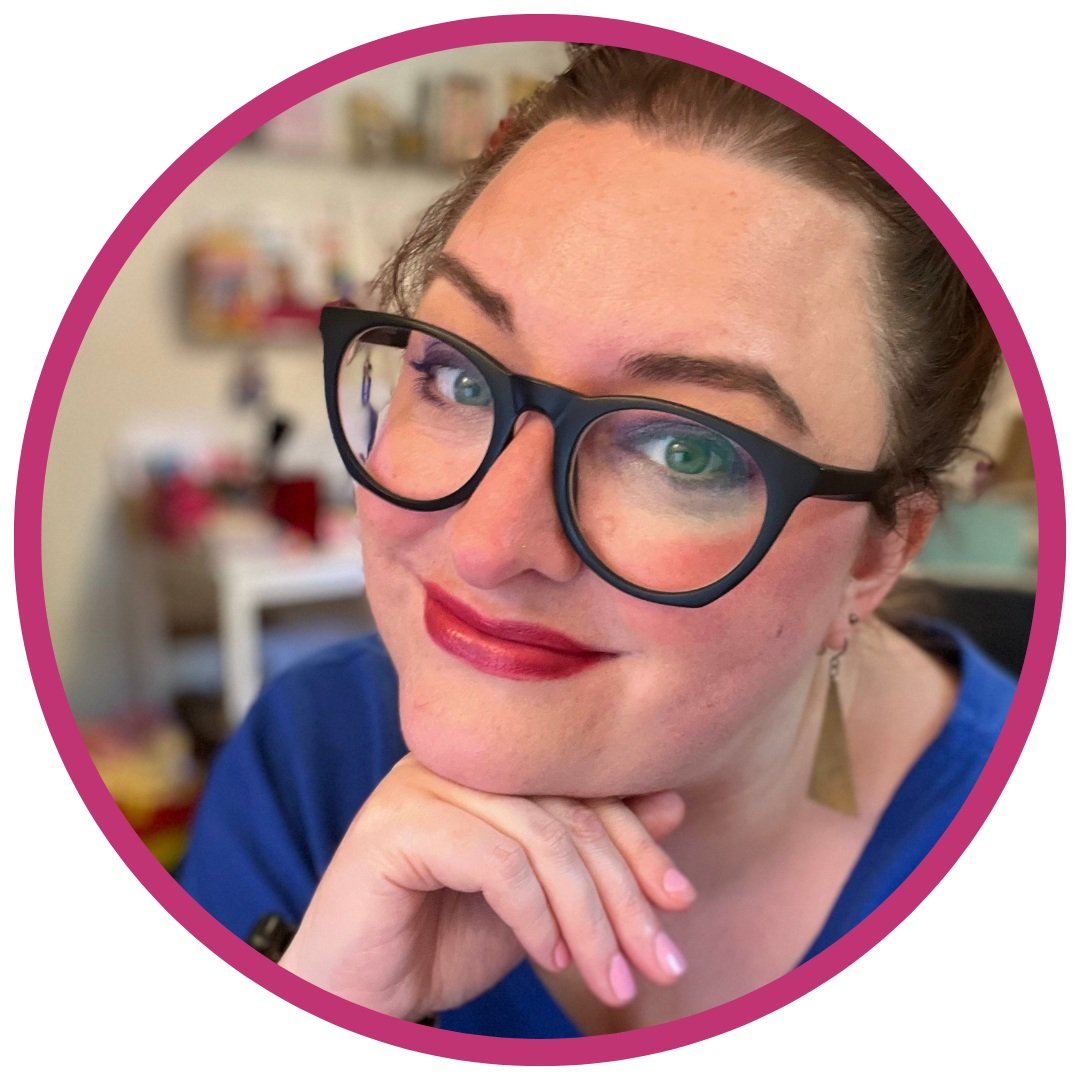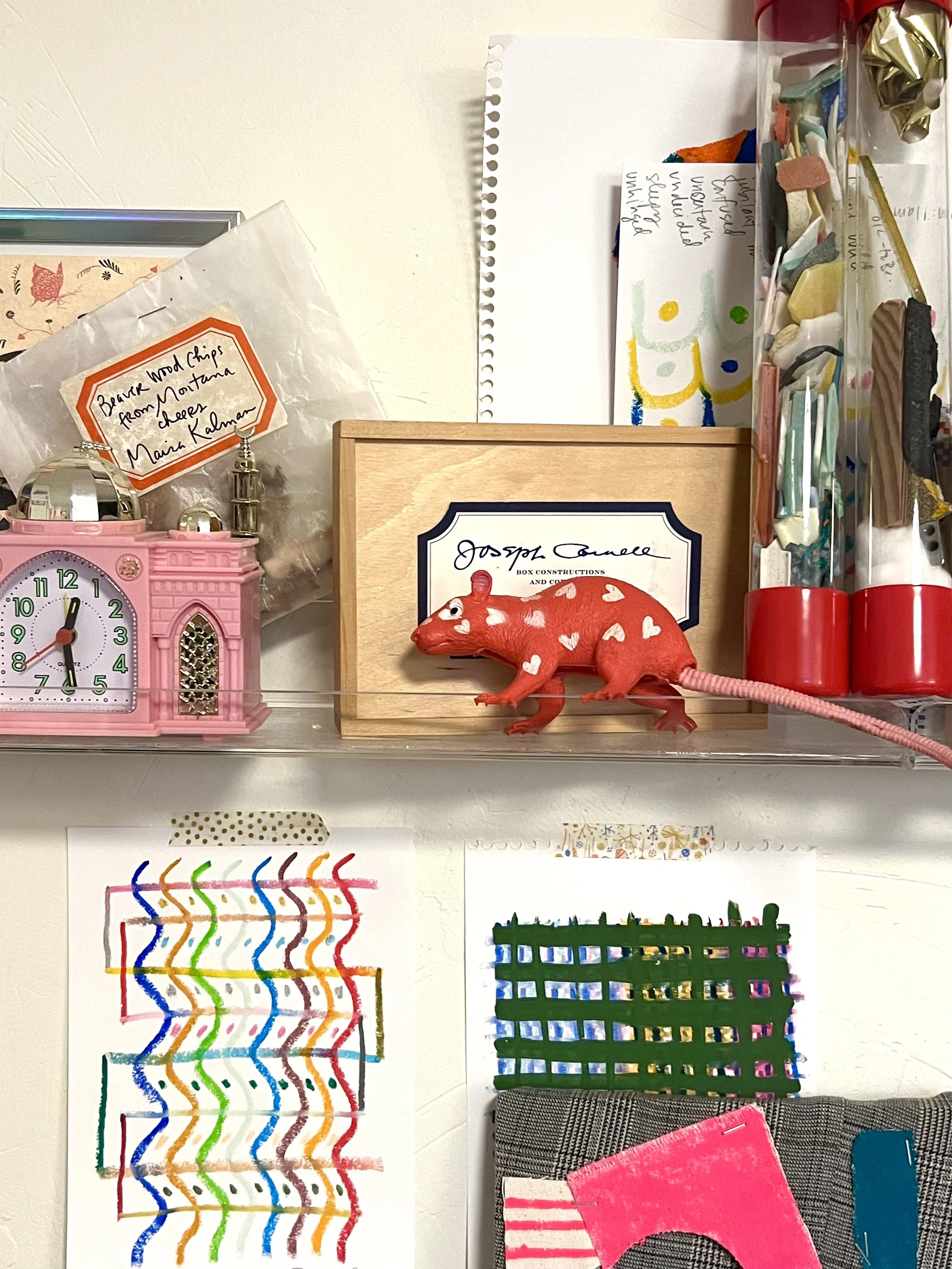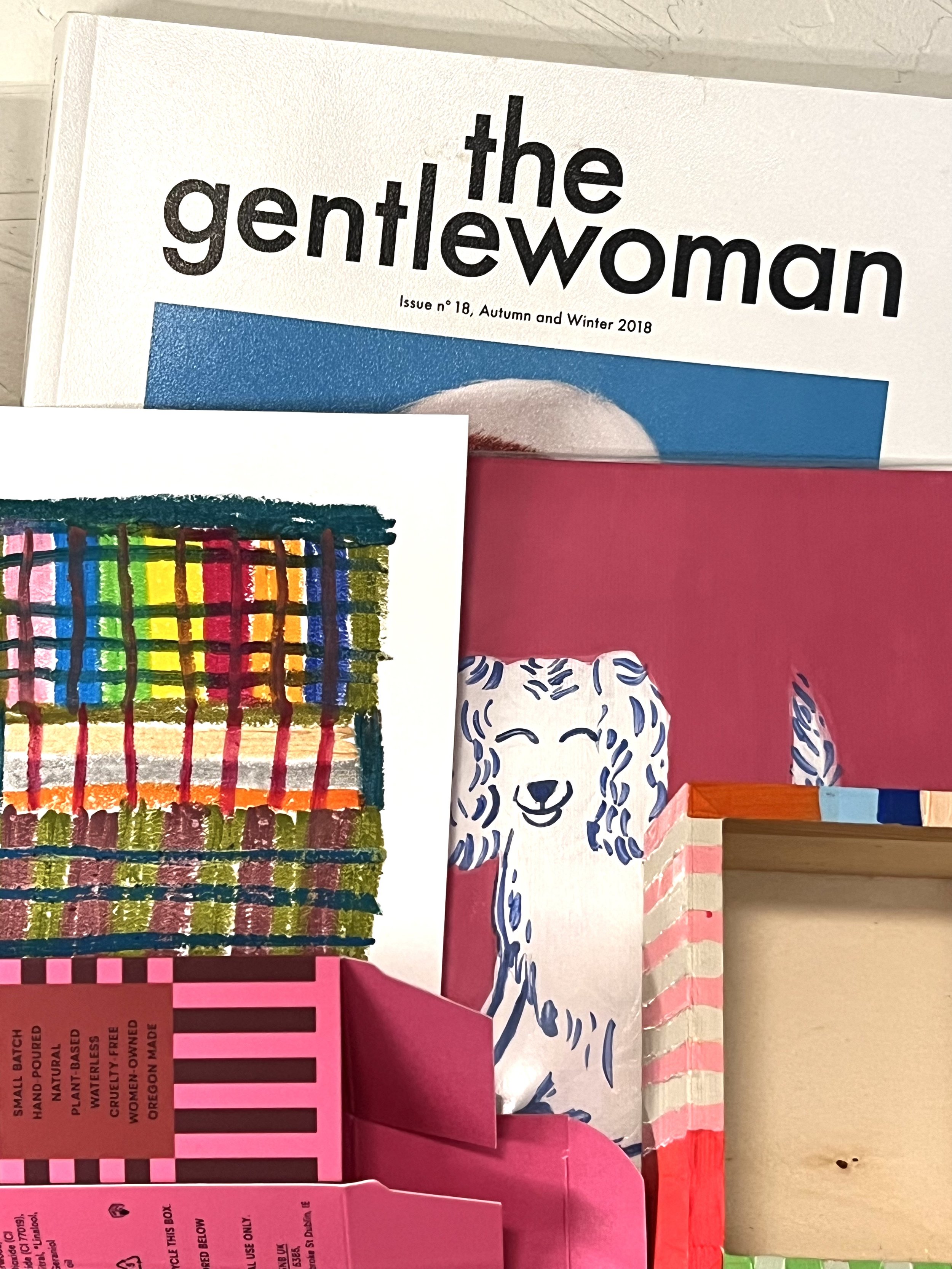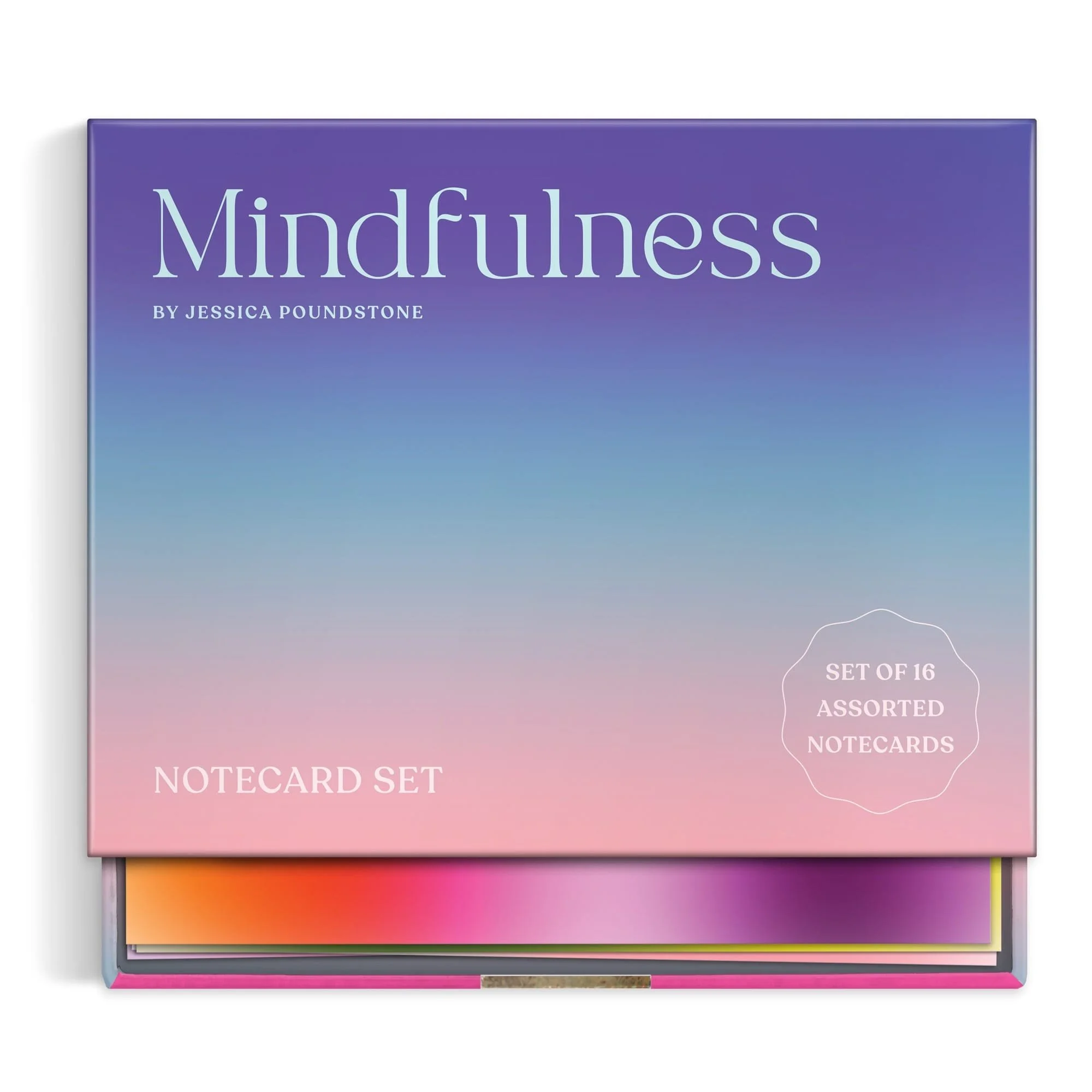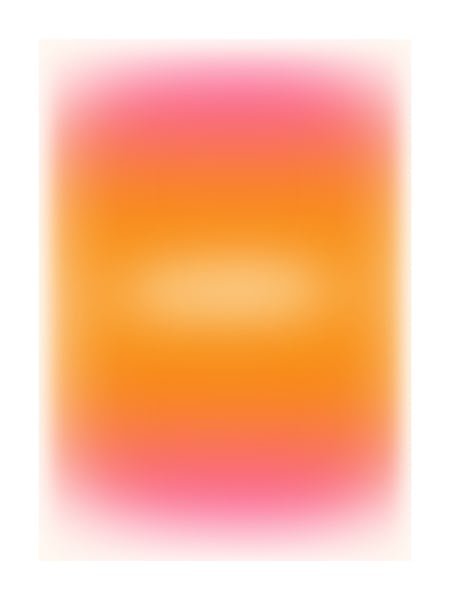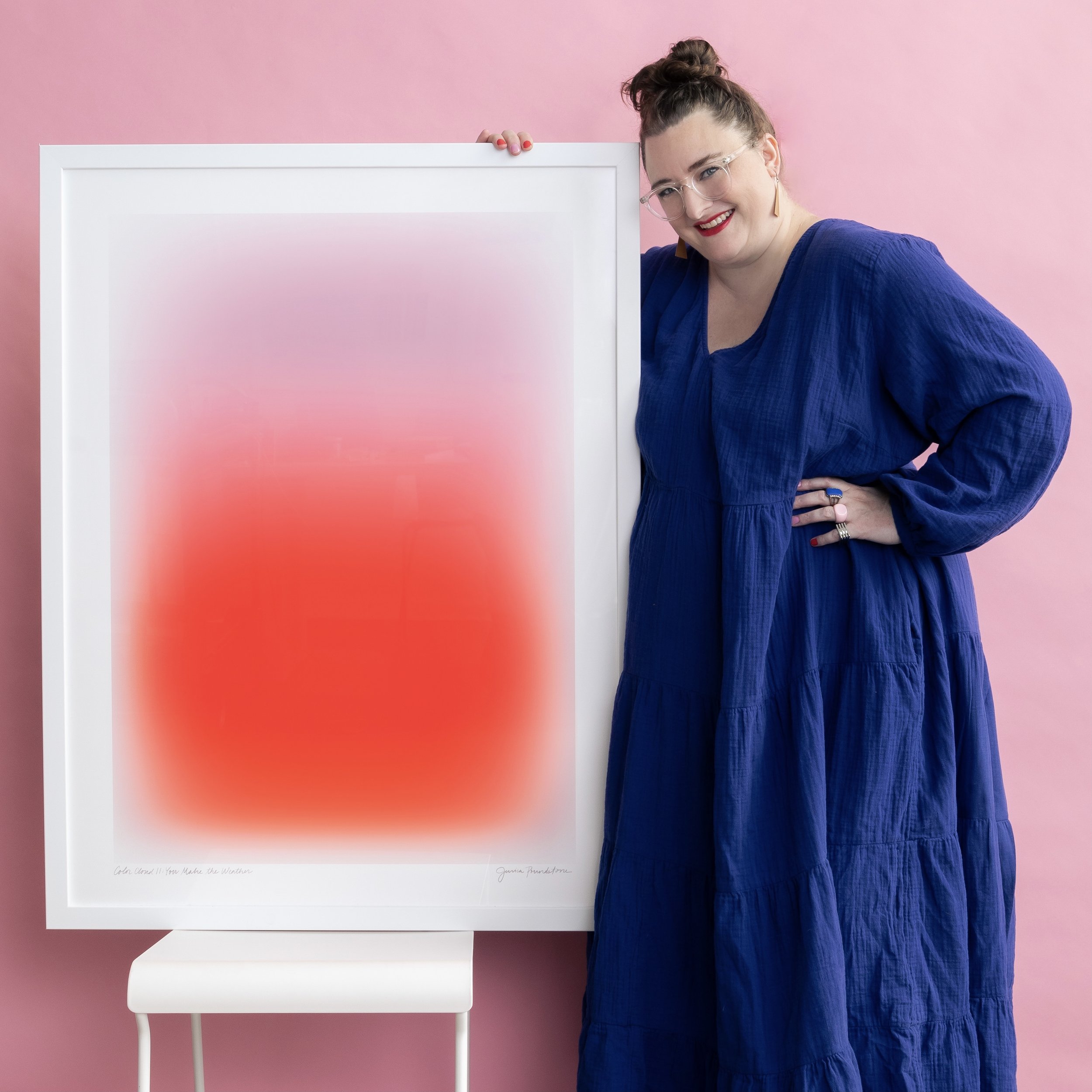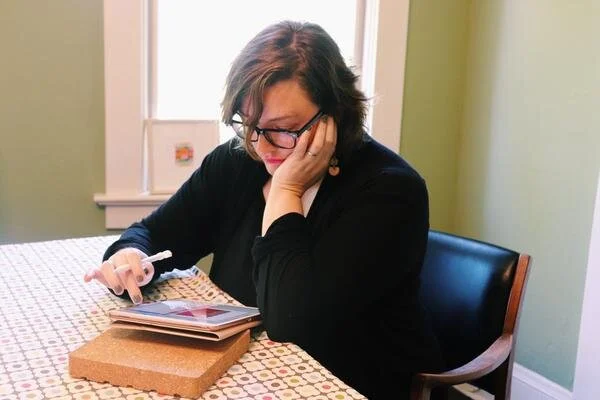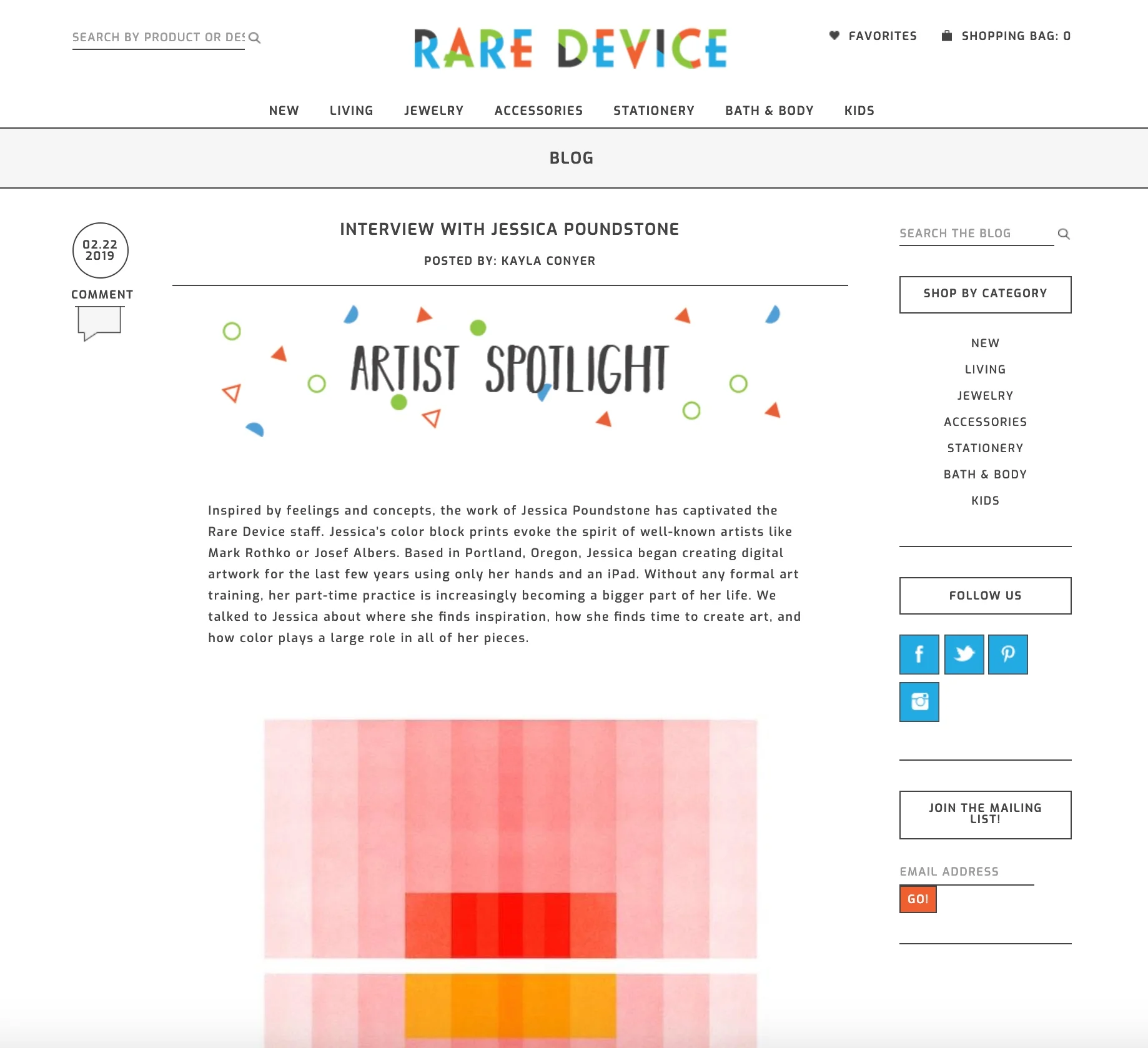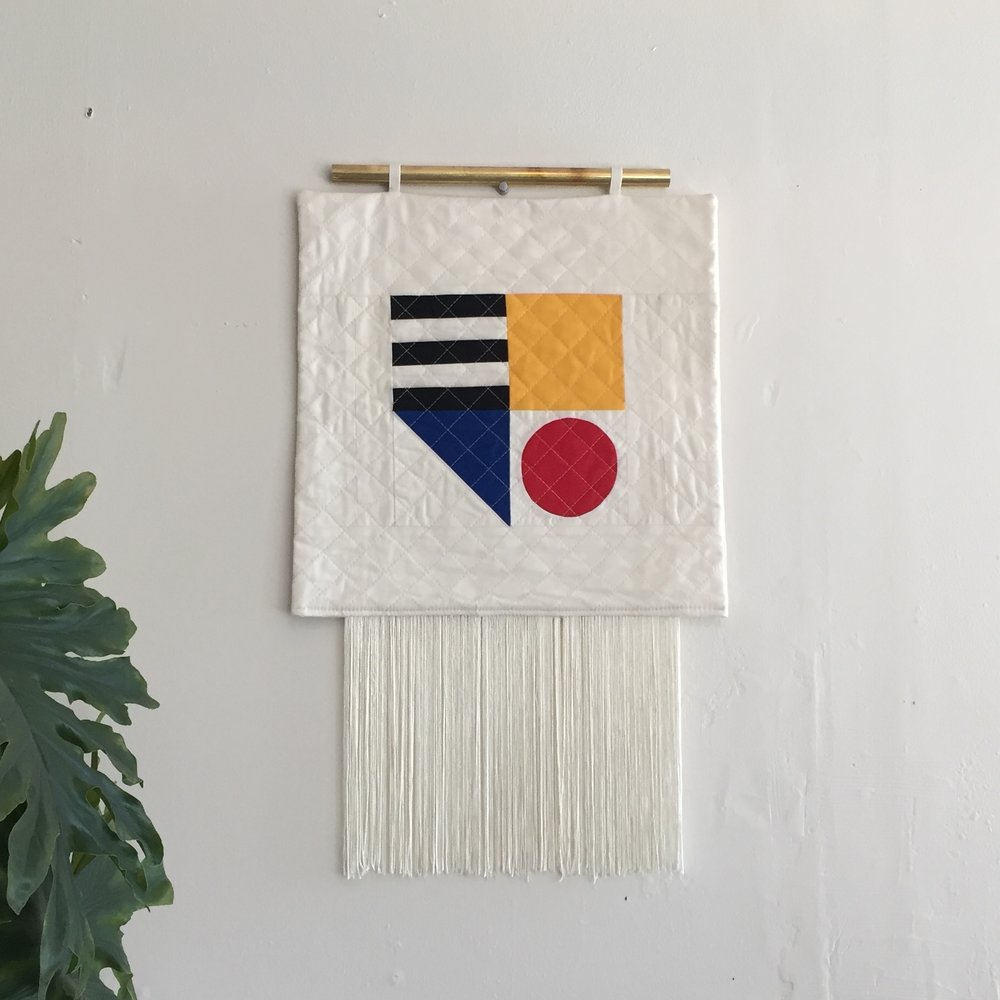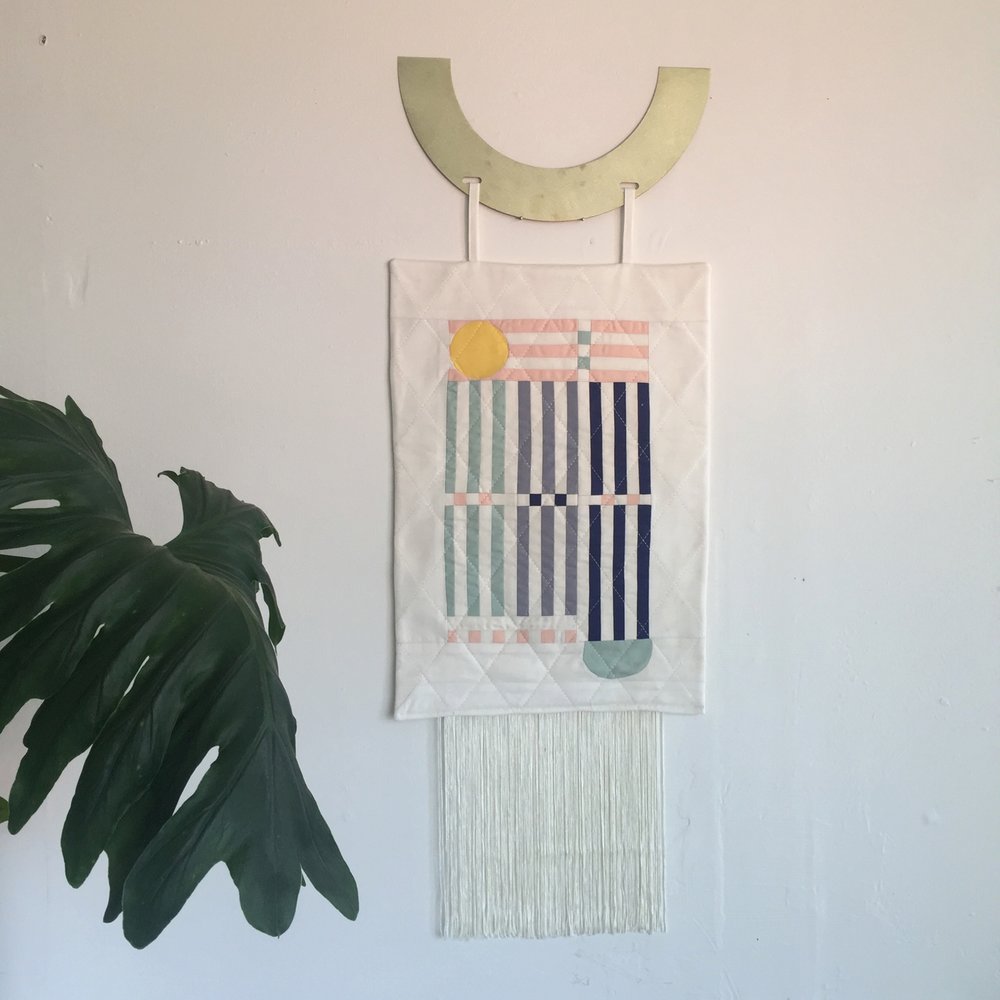Galison’s Artist of the Month for July c’est moi, Jessica Poundstone! The Galison team has kindly published an interview with me including me behind-the-scenes looks at my cozily-cluttered studio :) See the interview below, and shop the Mindfulness Puzzle Set and Mindfulness Notecards featuring pieces from my Color Cloud Collection. Thank you Galison!
Meet Jessica Poundstone, an artist and creative mind from Portland, Oregon. Her Mindfulness Puzzle Set inspires a relaxing headspace with original art and an opportunity to connect with oneself.
Galison’s Artist Of The Month: Jessica Poundstone
At what point in your life did you know that you wanted to be an artist?
"I’ve always wanted to be involved with art — looking at it, making it, thinking about it: the whole package. But I never knew anyone personally — other than my high school art teacher - shoutout to Leona Nelson! — who called themselves an artist. It wasn’t until pretty recently that I got more comfortable referring to myself that way, and started owning it for myself... It opens doors — in your life and in your mind — to begin thinking of yourself as an artist sooner rather than later!"
What are some things that give you inspiration?
"For inspiration for new work: buildings, sidewalks, books on art, street fashion, the way the light hits a wall, unexpected color palates I happen to notice (the other day it was a semi-truck’s cab/container color combo that got me excited!), films, certain songs I’ll listen to over and over: I get inspiration from so many places it can be overwhelming!"
What are three things you need in your workspace?
"Other than the basics — my computers, art supplies and good lighting — my workspace has got to have coffee (strong, dark with cream no sugar), water (preferably LaCroix Pamplemousse or Beach Plum) and my playlist which, depending on what I’m trying to get done, is a mix of faves like Talking Heads, Spoon, REM and PJ Harvey, or white noise (rain sounds, of course - I’m originally from and still live in Portland, Oregon!)."
Why is art important in everyday life?
"My favorite pieces of art give me a little jolt of beauty that says: 'Hey don’t forget: there’s so much mystery, fun, adventure and joy available to you!' That reminder to zoom out and see a bigger picture (haha, no pun intended) is important to me — especially when the routines of everyday life feel stifling. Art is a window we can always crawl through."
Mindfulness Notecards & Mindfulness Puzzle Set featuring my Color Cloud Collection are available at Galison or most places books and gifts are sold!

